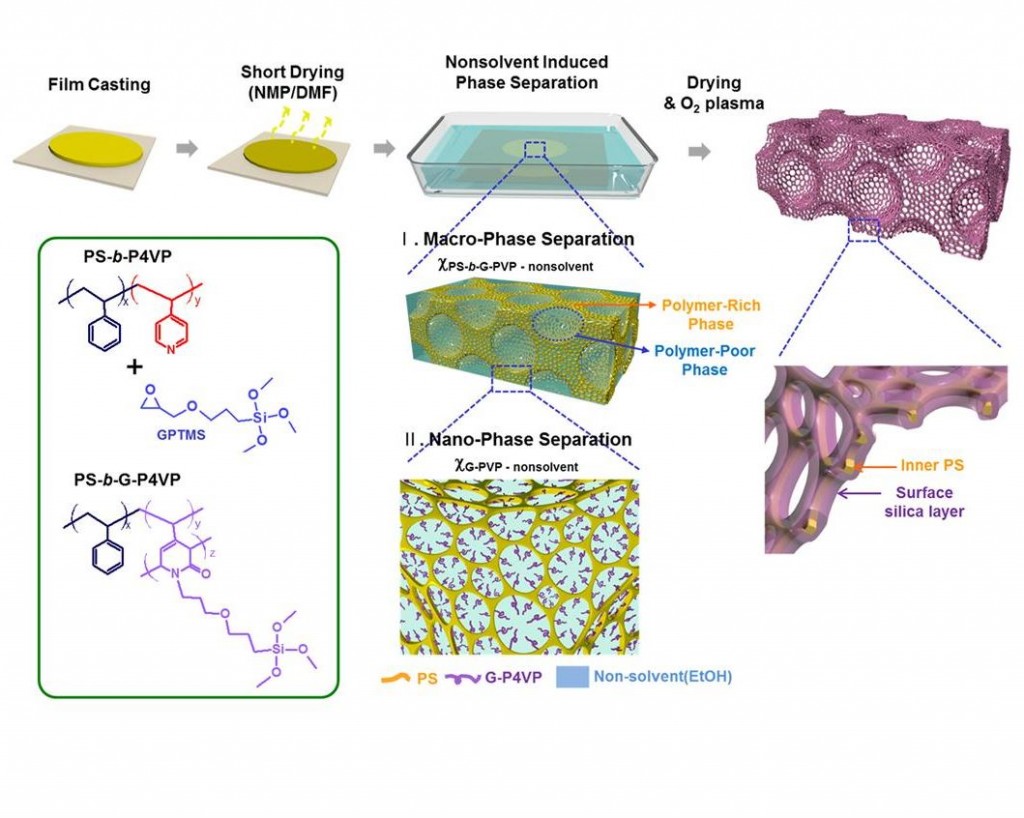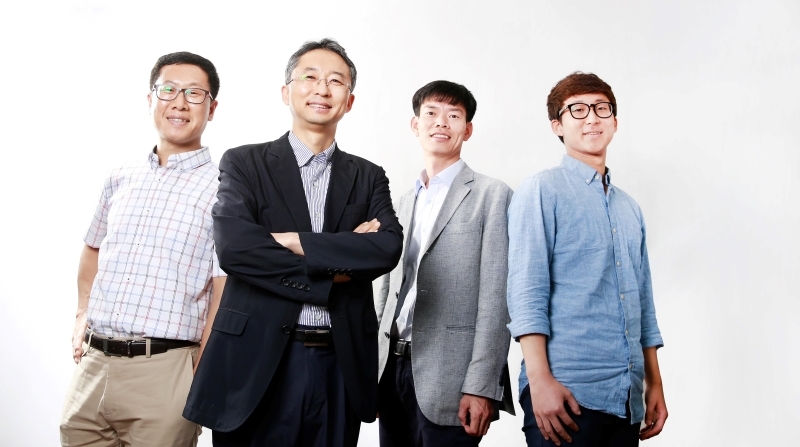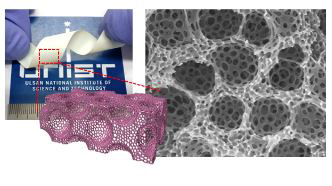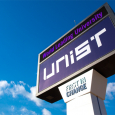A major study of advanced membranes for energy applications by researchers at UNIST introduced a revolutionary separator membrane for high-performance rechargeable batteries that are fast-charging, long-lasting, and inexpensive.
The findings appear in the July 24 issue of Science Advances, co-authored by Prof. Soojin Park (School of Energy and Chemical Engineering, UNIST), Prof. SangYoung Lee (School of Energy and Chemical Engineering, UNIST), research scientist JungHwan Kim (Department of Energy Engineering, UNIST), and Prof. Seungmin Yoo (Department of Energy and Chemical Engineering, Ulsan College), and two others.
The uniformity of the pore sizes and morphology of the seperator play an important role in determining the electrochemical performances of the Li/air batteries. This new surface energy-tailored BCP-based porous membrane features hierarchical multiscale pores that are shaped like honeycombs. Such pores are uniformly distributed over the entire surface of the membrane, allowing lithium ions to flow much freely within it.
“These ground-breaking experiements will pave the way towards next generation lithium-ion batteries, exhibiting significantly enhanced performance and increased energy efficiency,” says JungHwan Kim, the lead author on the study.

Schematic illustration, showing the fabrication and physical apperance of HMH-BCP membranes. Subsquent solvent-nonsolvent exchange leads to macro/nano-phase seperation to form a highly ordered hierarchical multiscale structure with a dual-porous structure.
Moreover, the reserach team states, “The introduction of a surface energy-modifying agent and the control of major phase seperation parameters (such as nonsolvent polarity and sovent drying time) enable tunable dual-phase seperation of BCPs, eventually leading to macro/nanoscale porous structures and chemical functionalities far beyond those accessible with current membrane technologies.”
Prof. Park notes, “Application of this BCP-based porous membranes as a LIB seperator has demonstrated exceptional improvement in charge and discharge rate performance and high-temperature cycling performance in comparision to any existing rechargeable batteries.”

(A to D): Cross-sectional SEM images showing HMH-BCP membranes with micro/nano pores uniformly distributed over the entire film thickness direction. HAADF-STEM images (F) and EDS analysis (G) show that the entire surface of the thin membrane is covered with G-P4VP blocks.
Prof. Yoo, another lead author of the study remarks, “This material would bring a significant boost and other benefits to a wide range of industry sectors, including membrane science, biosensing, as well as separation and purification technology.”
Prof. Lee notes, “Through this research we have set the technical groundwork for future advances in membrane science for the first time in history.” He continues by saying, “This material is expected to be readily applicable to a rich variety of membrane fields, including molecular seperation, water purification, and energy-related devices.”
This work has been supported by the IT R&D program through the Ministry of Trade, Industry and Energy/Korea Evaluation Institute of Industrial Technology (MOTIE/KEIT) and the Mid-career Researcher Program through NRF grant funded by the Ministry of Science, ICT, and future Planning (MSIP).
Journal Reference:
Seungmin Yoo, Jung-Hwan Kim, Myoungsoo Shin, Hyungmin Park, Jeong-Hoon Kim, Sang-Young Lee, and Soojin Park, “Hierarchical multiscale hyperporous block copolymer membranes via tunable dual-phase seperation.” Science Advances Vol. 1, no. 6, e1500101 (2015).


















